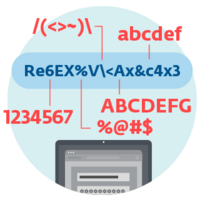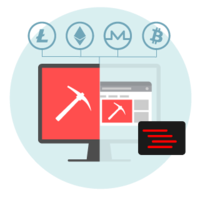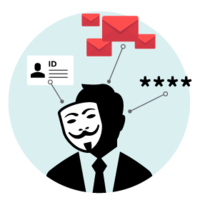How does ransomware work?
There are multiple techniques used by ransomware cybercriminals including:
- Screen locker ransomware blocks access to the device’s screen other than the malware’s user interface.
- PIN locker ransomware changes the device’s PIN code, rendering its content and functionality inaccessible.
- Disk coding ransomware encrypts the MBR (Master Boot Record) and/or critical file system structures, and thus prevents the user from accessing the operating system.
- Crypto-ransomware encrypts user files stored on disk.
Warning
Generally these kinds of ransomware demand payment, most often in Bitcoin, Monero or another hard-to-trace cryptocurrency. In return, the cybercriminals claim they will decrypt the data and/or restore access to the affected device. But there is absolutely no guarantee that cybercriminals will deliver on their side of the bargain (and sometimes are unable to do so, either intentionally or as a result of incompetent coding). Therefore ESET recommends not paying the sum demanded - at least not before contacting ESET technical support to see what possibilities exist for decryption.
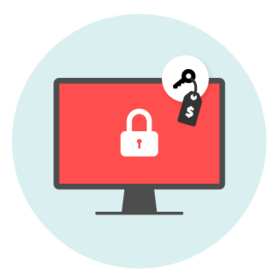
Why should SMBs care about ransomware?
According to the Ponemon 2017 State of Cybersecurity in Small & Medium-Sized Businesses (SMB) survey, every other company in the poll had experienced a ransomware attack in the previous 12 months, some on multiple occasions. Most (79%) saw their systems infiltrated due to social engineering attacks.
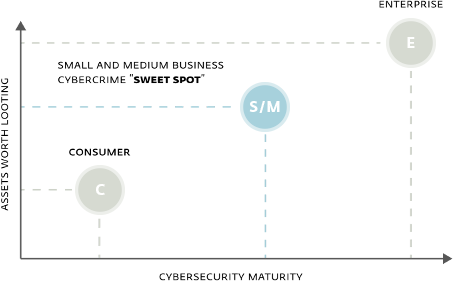
These statistics document two things:
1. Contrary to their own beliefs, SMBs are becoming an increasingly interesting target for cybercriminals.
2. SMBs are more valuable targets for cybercriminals than consumers, and more vulnerable than large enterprises, as small and medium businesses typically lack the financial and information security resources of their corporate counterparts. This combination represents a “sweet spot” for the attackers.
Read more
The same report also notes that desktops were the most targeted devices (78%), followed by mobile phones and tablets (37%) and company servers (34%). If the ransomware attack was successful, most (60%) of the victims paid the demanded ransom. The sum they paid was on average, more than $2150. But there are better ways to handle the ransomware threat, by focusing on prevention and recovery.
How to keep your organization protected?
Basic prevention and recovery steps:
- Backup data on a regular basis and keep at least one full backup of the most valuable data off-line
- Keep all software and apps – including operating systems – patched and updated
- Use a reliable, multilayered security solution and make sure it is patched and up-to-date
Additional protective measures
- Reduce the attack surface by disabling or uninstalling any unnecessary services and software
- Scan networks for risky accounts using weak passwords and ensure they are improved
- Limit or banuse of Remote Desktop Protocol (RDP) from outside of the network, or enable Network Level Authentication
- Use a Virtual Private Network (VPN) for employees accessing company systems remotely
- Review firewall settings and close any non-essential ports that could lead to an infection
- Review rules and policies for traffic between internal company systems and outside network(s)
- Password-protect the configurations of your security solutions to prevent them from being disabled by an attacker
- Segment the company LAN into subnets and connect them to firewalls to limit lateral movement and the possible impact of ransomware, or other attacks, within the network
- Protect your backups with two-factor or multi-factor authentication
- Regularly train your staff to recognize cyberthreats and how to handle social engineering attacks
- Limit shared file and folder access only to those who need it, including making content read-only, and only changing this setting for staff who must have write access
- Enable detection of potentially unsafe/unwanted applications (PUSA/PUA) to detect and block tools that can be misused by attackers to disable the security solution
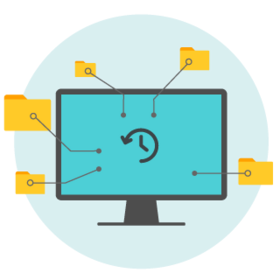
No business is completely safe from ransomware
If your company has not been hit by ransomware you might be tempted to assume this threat is reserved for larger organizations. The statistics show you’d be wrong. Also, a targeted attack can get out of control and cause indiscriminate damage, even worldwide. In June 2017, a malware attack in Ukraine, detected by ESET as Diskcoder.C (aka Petya or NotPetya), soon burrowed its way out of the country. It later transpired this was a well-orchestrated supply-chain attack that infiltrated popular accounting software to attack and harm Ukrainian organizations which got out of hand, infecting many global and smaller companies, causing hundreds of millions of USD in damage.
Another ransomware worm detected by ESET as WannaCryptor.D (aka WannaCry) spread rapidly, using the leaked NSA tool EternalBlue, which exploited a vulnerability in the SMB (Server Message Block) network protocol, mainly used to provide shared access to files and printers. Despite Microsoft issuing patches for most of the targeted, vulnerable Windows OSes almost two months prior to the attack, WannaCryptor.D infiltrated networks in thousands of organizations worldwide. The cost of the damage resulting from this cyberattack has been estimated in billions of USD.
ESET security protects against ransomware
ESET PROTECT
Advanced
Protect your company computers, laptops and mobile devices with security products all managed via a cloud-based management console. The solution includes cloud sandboxing technology, preventing zero-day threats and ransomware, and full disk encryption capability for enhanced data protection.

